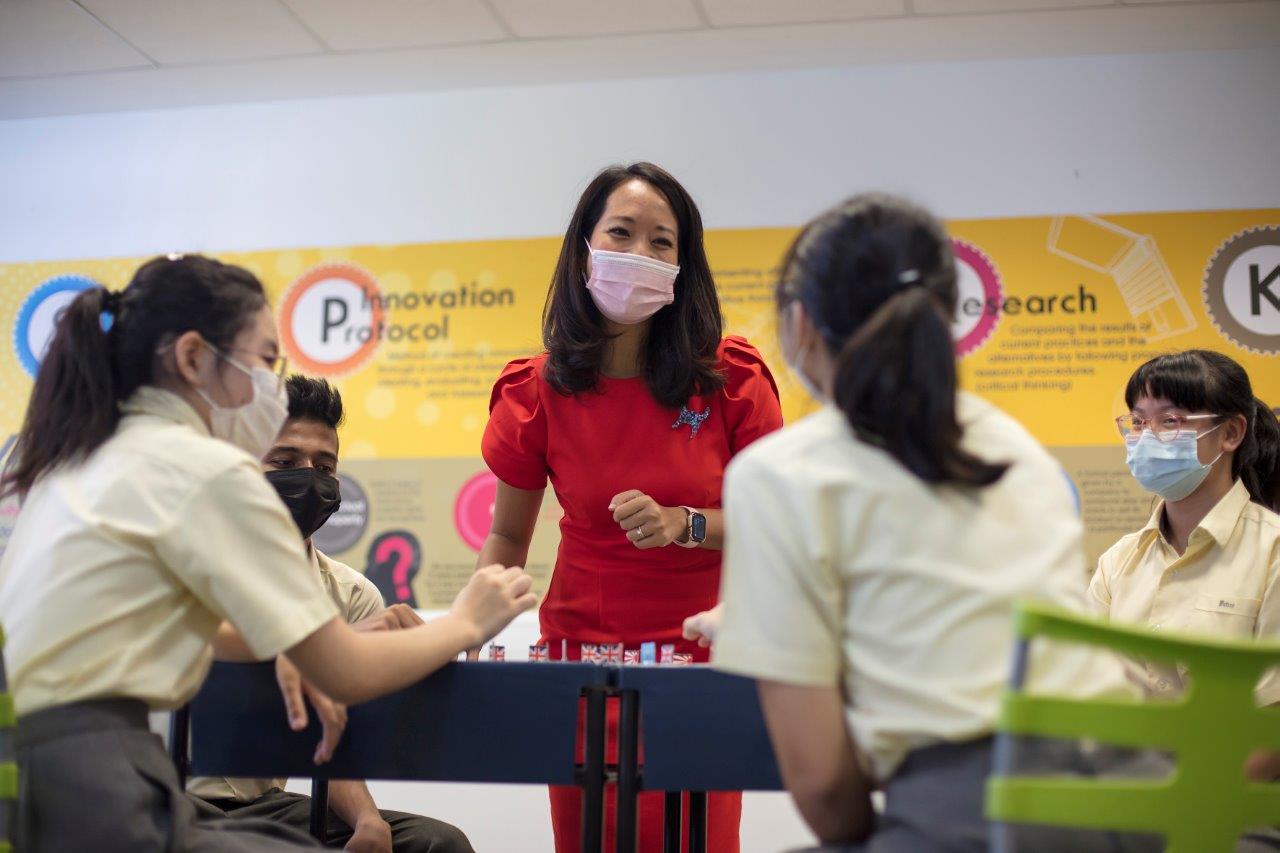Dr Koh Noi Sian, Nanyang Polytechnic, President’s Award for Teachers 2019 Recipient
The student is staring at the monitor with increasing frustration. She is working on an exercise to learn the programming language Python but has been stuck for the last few minutes. She frowns, jabs randomly at the keyboard, and backspaces furiously.
Just as she is about to give up, a hint pops up on screen, asking her to check the syntax. The student re-looks, finds her error, solves the problem and moves on to the next exercise.
This ‘affective tutoring programme’ is the brainchild of Dr Koh Noi Sian, the principal co-investigator of the system. The system uses artificial intelligence (AI) to recognise if a student is stuck and ready to give up, and then provides a helpful pop up hint.
A senior lecturer in data analytics at Nanyang Polytechnic (NYP), Noi Sian harnesses student feedback to help them learn better. A very important type of feedback is a student’s emotional state.
“Emotions are integral to learning,” says Noi Sian, who has been teaching at NYP for almost eight years. “Emotions can affect how students understand and apply their knowledge. We don’t want our students to give up because they feel frustrated with a problem.”
Timely help
Noi Sian, who has a PhD in Information Systems, co-created the engine for emotionsensing, user interface and hint generation with her colleague and final year students. The web cam captures students’ expressions – the eyes, eyebrows and mouth — to identify signs of frustration. The speed of typing and pauses also offer clues to the student’s mental state.
The system, which has been running since last October, is triggered, on average, once or twice per session for every student.
“Students find it very useful,” she says. “Also, some students are shy or may not be comfortable with asking for help, so this would be good for them too.”
Students aren’t the only ones benefiting. Noi Sian links the system to a data dashboard, so that tutors can see patterns in the topics that students are weak in.
“If there is a problem encountered by a majority of the students, we will check if the issue is with the understanding of the topic or that particular question. If it is with the topic, then we will adjust our teaching techniques to clarify the topic. If the issue is with the phrasing of the question, then we will rephrase it to make it clearer.”
This system is now being used in the Programming Essentials module taken by the students in the Diploma in Business Intelligence and Analytics course at NYP. There are plans to roll out the system for other programming modules at the polytechnic as well. In addition, Noi Sian is now working with other researchers at NYP and an industry partner to bring the system outside NYP.
Quick feedback
At the heart of the system is the understanding that a good teacher needs to ensure that students actually understand the material, and to do so, teachers need feedback from students.
This is why Noi Sian is involved in another student feedback project. Known as Assessing Learning in Real Time (ALERT), this system regularly seeks feedback on lessons from students to see if they have understood the material. Traditionally at polytechnics, students only give feedback towards the end of the course.
With ALERT, students answer three short questions to indicate how they feel about the lessons; what concepts they have difficulty understanding; and they provide comments accordingly. Data visualisation makes it easy for lecturers to understand the feedback.
Noi Sian uses the ALERT system weekly for one of her modules and every two or three weeks for a different module to check on how the students are handling the course. With the feedback, she can revisit concepts that students struggle with. ALERT is now being tried out by around 50 lecturers across the polytechnics and Institute of Technical Education.
On top of this, Noi Sian has been helping the polytechnic meet the needs of working adults who are hungry to learn more about applying data analytics in their respective industries. She has also been conducting classes to up-skill her colleagues on data analytics. So far, she has trained 50 lecturers at NYP in the fundamentals of the subject.
No time for boredom
Noi Sian is constantly looking for ways to help her students learn better, so she embarked on ‘bite-sized pedagogy’.
Traditionally, modules in polytechnic have an hour-long lecture, followed by an hour-long tutorial and an hour-long practical session. Noi Sian combined these, but in smaller chunks: a 15-minute lecture introducing the topic, followed by a 15-minute practical or tutorial to make sure students understand the material, before resuming the lecture again.
“Students don’t have time to get bored. They like this way of teaching. It’s very effective.” she says.
She ran an experiment that showed that students remembered the information better, understood it more, and were able to apply and analyse it better than if the lectures were delivered using the traditional approach. She presented a paper summarising her findings at a conference in Spain last year.
Real-world experience
The next step to teaching is of course ensuring that students get real-world experience. For Noi Sian, this means that her students need to have high quality final year projects, so that “they can display the work they have done to future employers”.
The students of the diploma course have worked on industry projects for companies like Cheers by FairPrice and the National Healthcare Group Polyclinics (NHGP). For Cheers, the students developed a forecasting model on products to help store managers decide on the quantity of products to replenish. With NHGP, students worked with a data set of patients to help the organisation identify who would be most likely to suffer heart attacks.
More than a teacher
Noi Sian doesn’t see her job as merely teaching students the basics of data analytics and business intelligence. Instead, she sees her job as ensuring that the students are successful in school and in their lives. This involves being a mentor to students.
Noi Sian’s approach is to listen to them, to be available to them, and to guide rather than nag at them. “I believe the fundamental goal of mentoring is to make a difference in someone’s life. I believe anyone can achieve mastery in the areas that they are strong at.”
“In my years of teaching at NYP, I have encountered students with very challenging backgrounds. Despite the hardship and failures, they continue to try and have bounced back even stronger.”






